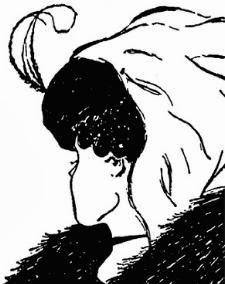http://www.craftideas4free.com/cognitiveillusio.html
DAI 323 Visual Design Literacy - Louis D. Banks
Wednesday, October 2, 2013
Visual Perception 1 / Top-Down Visual Processing
Wednesday, September 18, 2013
Meaning 2 - Symbolic, Representational and Abstract
Representational
- The colors of the map represent the trains that transport people all over the city
- The viewer perceives a road map of the transit lines that makes it easy to travel throughout the city without getting lost.
- The colors directly correspond to the abstract level so that the viewer can have a clear picture of where to go and on the symbolic level, the colors help delineate their meaning in the grand scheme of city travel
Abstract
- The actual transit map is the abstraction and it tells the user that there is a centralized system of transit with interlocking networks that will get you where you want to go.
- The viewer feels comfortable with the linear map because it is familiar and works like a flow chart of metro traffic.
- The abstract works perfectly with the symbolic to illustrate the path of the network and works with the representational to demonstrate the ease of mobility for the transit lines.
Symbolic
- The text and the map legend demarcate transit stops, stations and direction
- The viewer is not overwhelmed by the transit system and welcomes the addition of the symbols so as to guide them through the city.
- The symbolic gives meaning to the abstraction so the viewer can not get lost and it simplifies the representational so that the viewer can see there are only six distinct lines that sometimes overlap but are distinct in their direction.
Wednesday, September 11, 2013
Meaning 1 - Symbolism, Representation and Abstraction
I chose this file to delineate abstraction since it looks like an IQ test for spacial recognition.The three words that hover on top: "Genius," "Intelligence," and "Test" are a reduction of the basic visual elements that we process when viewing a a symbol consisting of the anagram IQ. IQ is a concept based abstraction that delivers the meaning of genius when paired with a sketch of Albert Einstein. This graphic is pure abstraction working at its best since the more representational the visual information, the more specific its reference; the more abstract. This abstraction retains the realistic, recognizable information that denotes a highly evolved intelligence quotient.
This MUNI train image perfectly exemplifies representation in that it directly reports the visual details of the city-wide mass transit system. Visual reality is the basic and dominating experience the viewer recognizes when paired with an abstract of a MUNI map and the symbolic logo. We see a mode of transportation that is recognizable in all the elemental visual material in our daily hustle and bustle getting to and from work or school. We see the world in which we live and travel and sight is the only necessity for visual understanding.
Abstraction towards symbolism requires ultimate simplicity and that is what this image of mathematical symbols does. These symbols are effective because they are recognized, remembered and reduced to connote basically any type of mathematics. These symbols are mechanisms for understanding the concept of mathematics and therefore penetrates the mind of the viewer for significance. These are icons that look like what they mean and is culture-dependent. These symbols are even more effective in the transmission of meaning since they are totally abstract.
This MUNI train image perfectly exemplifies representation in that it directly reports the visual details of the city-wide mass transit system. Visual reality is the basic and dominating experience the viewer recognizes when paired with an abstract of a MUNI map and the symbolic logo. We see a mode of transportation that is recognizable in all the elemental visual material in our daily hustle and bustle getting to and from work or school. We see the world in which we live and travel and sight is the only necessity for visual understanding.
Abstraction towards symbolism requires ultimate simplicity and that is what this image of mathematical symbols does. These symbols are effective because they are recognized, remembered and reduced to connote basically any type of mathematics. These symbols are mechanisms for understanding the concept of mathematics and therefore penetrates the mind of the viewer for significance. These are icons that look like what they mean and is culture-dependent. These symbols are even more effective in the transmission of meaning since they are totally abstract.
Sunday, September 1, 2013
Subscribe to:
Comments (Atom)





